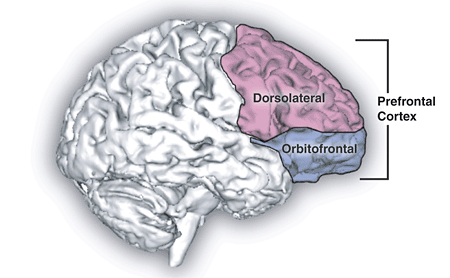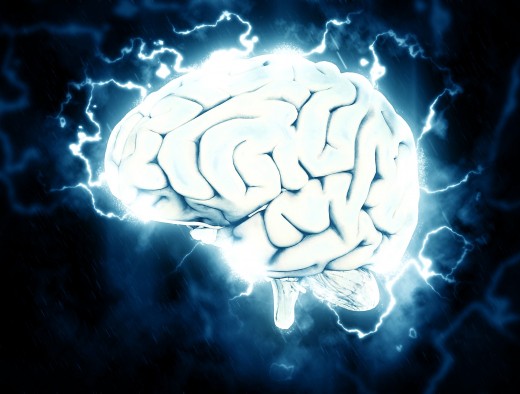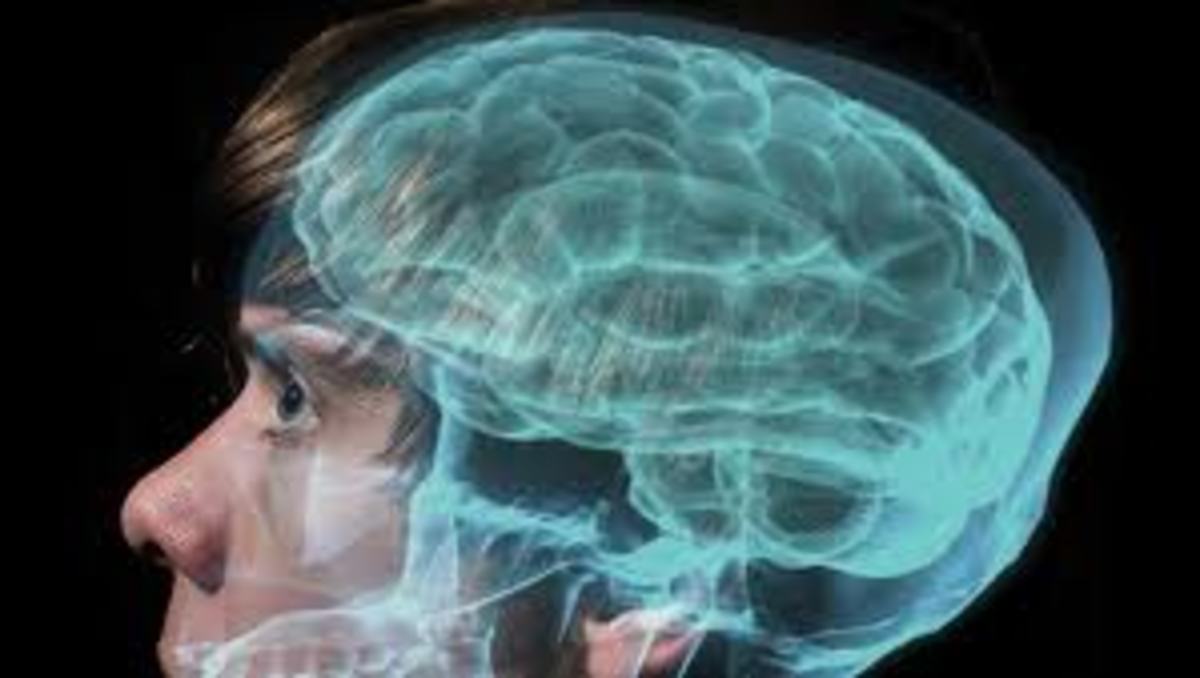Aggressive Behavior and the Human Brain

Our Brain and Aggression
There are various levels of aggression from arguments, to full blown anger, from verbal abuse to physical harm, and damage to property, from covert provocative statements to fist fights, and more. Aggression is an emotional outlet. All emotion originates in the brain.
There are regions of the brain and the body that influence normal human aggression. By understanding what happens in the body, the variation in our biology, and abnormalities that can influence aggressive patterns, we can gain a better understanding about aggressive behavior.
The brain reacts to aggression in biologicial, neurophysiologically and physiological ways that have proven to be complex and mysterious. Science is starting to understand the neural processes and connections responsible for producing aggressive behavior.
Our brain and our body influence aggressive expression, including hormones and many neurotransmitters that become activated. Scientists found when certain areas of the brain in monkeys, were electrically stimulated, it could increase aggressive behavior. The amygdala is linked to aggressive behavior.
There are two areas of the brain that directly regulate and affect aggression. The amygdala causes aggression. When scientists stimulate the amygdala aggressive behavior increases. Lesions on the this part of the brain reduce aggression and competitive drive.
The other area of the brain is the hypothalamus, which regulates aggression. When th hypothalamus is electrically stimulated, it was shown to cause aggressive behavior. More importantly research determined an interaction with the receptors associated with the hypothalamus also affected aggressive levels based on their links with the neurotransmitters serotonin and vasopressin (a brain chemical associated with aggression).
Parts of the Brain and Aggression
Aggression is controlled by the primitive part of the brain, in the amygdala. The amygdala is responsible for regulating our perceptions, our reactions to these perceptions, our aggression and our fears. The amygdala is connected with our other body systems including the sympathetic nervous system, our facial responses, how we process smells, and the release of neurotransmitters affecting stress and aggression.
The amygdala helps us experience fear and learn from the situations that create the fear. Our amygdala is activated in response to stimuli from negative and positive experiences. Our brain remembers events that are dangerous so we learn to avoid it in the future. Our amygdala is also activated when we read other people’s facial expressions. Our perception can trigger aggression.
There is a neural connection between the amygdala and regions of the prefrontal cortex that help us control our emotions and aggression. The prefrontal cortex is a control center for aggression. When it is highly activated we are better able to control our aggressive impulses. Scientists believe there is a correlation between our ability to regulate emotions and aggression and violence. The differences in the regions or interconnections between the amygdala and the prefrontal cortex can increase or decrease the tendency towards impulsive aggression.

Two Parts of the Brain and Aggression
There are two parts of the brain that are mainly involved with aggression:
-
Prefrontal cortex
-
Dorsal anterior cingulated cortex
The prefrontal cortex is associated with high level thinking and executive functions. Aggressive behavior is often the result of an inability to control our self regulation. Studies have shown people who have damage or lesions to this area of the brain tend to be more aggressive.
The prefrontal cortex is connected to the amygdala and hypothalamus, which receive inputs from our senses and create a feedback loop that stimulated our hormones, neurotransmitters, and our muscles to go into action. Our prefrontal cortex is also involved with our emotions, detection of conflicts, and triggers our neurological system in social interactions.
People who are aggressive on a regular basis have shown on brain scans to have lower neuron activity in the prefrontal cortex, as compared to people who are not aggressive. People who have had brain injury to the prefrontal cortex and amygdala display more impulsive and antisocial aggressive behavior and ahve less ability to control their aggression.
Stress and the Human Brain
Stress also can make someone act out aggressively. When we are tense we can be quick to lash out and cool down. Behavioral neuroscientists in Amsterdam at the Leiden/Amsterdam Center for Drug Research found a feedback loop in rats between a hormonal stress response and the aggressive system in the brain. Menno Kruk, PhD led the study conducted 5 experiments on 53 male rats, raised the blood levels of a stress hormone by electrically stimulating the hypothalamus, “attack center” of the brain. The study also found stress changed the perceptions of the rats. Once they felt threatened, even if it was a false perception, it would still trigger aggressive behavior. When the brain was stimulated, the rats suddenly released a stress hormone similar to human cortisol. Kruk believes our hormones are not the cause of aggression. The hormones affect neurons that make it easier to act out aggressive behavior. When our aggression system is activated, our body gets prepared for the fight or flight response. Cortisol sends signals to the brain, facilitating aggressiveness.
Feeling aggressive is a stressor in itself, which then activates the stress response and so the aggressive loop is set up. These responses happen very rapidly, and may explain why aggressive behavior escalates easily, and is hard to stop. Although this same mechanism has not been found in humans, there are neurophysiological similarites to the brains of humans. It would explain why road rage, and other aggressive behavior get triggered.

Bullying and the Brain
Research has found bullying is motivated by the enjoyment of picking on their victims, and is motivated by a neurological disorder. Scientists have found the brain activates a primary reward response to this type of aggressive behavior, making the activiy pleasurable for the bully. In a research study done at Mount Sinai, where researchers manipulated neurotransmitter activity conclusively proved by altering neurotransmitters they can alter the inclination to bully.
Many neurotransmitters interact with these regions of the brain and affect aggressive behavior. 5-HT receptors, serotonin, dopamine, testosterone, and a variety of other hormones, enzymes, and other molecules play a role with the patterns of aggressive behavior.
Low levels of 5-HT are related to higher levels of impulsive or aggressive behavior. High levels have shown to reduce aggression. There is no evidence this is where aggression comes from.
The gene, MAOA (monoamine oxidase A), located on the X chromosome is known to interact with serotonin, dopamine, and norephedrine. Males have one X chromosome, females have two. Lower amounts of MAOA in the brain, and with certain conditions is associated with increased aggression and reduced ability to restrain impulsive behavior. Low MAOA in children who have experienced trauma or abuse have been shown in studies, to have heightened aggressive and antisocial behavior as adults. There is no gene identified as an aggressive gene. Certain situations spur aggressive actions.
Mapping the Brain and Aggression
Hormones and Aggression
Hormones also play a role in aggression.
Testerone, the male sex hormone, is associated with increased aggression in animals and humans. Testerone relates to aggression by influencing the development of several areas of the brain that control aggressive tendencies. Testerone also helps muscle development, body mass, height, and other physical development, which affects the ability to be more aggressive. Testerone also affects competiveness. Studies don’t show testerone causes aggression. The relationship shows more testerone is related to more aggressiveness.
Testosterone is similar, in that circulating testosterone increases after social competition and dominating interactions. There is no proof aggression comes from testosterone, or that increased production of testosterone results in increased aggressive behavior.
Aggression has been found to cause temporary increases in testosterone. It is actually aggression that has a stronger effect on testerone than the effect of testerone on aggression. People who feel they have been insulted show more agression and higher levels of testosterone.
Stress is also associated with increased levels of testerone and aggression. Playing competitive games also increases testosterone levels of winners and decreases testosterone levels in losers.
Serotonin is an aggressive inhibitor. Low levels of serotonin is connected to future aggression. Studies have shown it is harder to control anger, irritability, and aggression in people who have too little serotonin. Higher serotonin levels have shown reduced aggressive reactions.

Brain Abnormalities and Aggression
Research is learning to locate the abnormalities in the brain that may make some people more aggressive than others. In research studies, it was found the amygdala, the part of the brain related to fear, was activated in brain scans of adolescent boys who overreacted to perceived threats. They used boys who overreacted and then regretted their actions.
In the study, these boys were shown images of threatening faces. Their amygdala overreacted compared to a control group. The amygdala is related to reasoning and decision making, and the boys displayed more fear when looking at the angry faces.
Researchers believe this may provide a neurobiological explanation for their behavior because they have lower self control over their impulses. In other words, they just react. Scientists believe this may be due to their slower prefrontal cortex. They have less capacity to think about their consequences, and they just react. Scientists are not sure why some people may have this brain abnormality.
Brain damage and impairment from nutrient deficiencies can hinder brain growth and development and predispositon malnourished children to aggressive tendencies.
Traumatic brain injury (TBI) increases the likelihood that aggressive behavior may develop. The injury may damage parts of the brain, especially in the frontal lobes that can manage aggression and impulse control. Brain scans can’t necessarily detect the results TBI has on aggressive behavior.
Elderly people who suffer from dementia may have limited intellectual functioning, reasoning, memory, and may also imagine threats and this may contribute to aggressive behavior.
Are you an aggressive person
Brain Research and Aggressive Behavior
Our emotions, depression, anxiety, fear, our reaction to physical pain, less social interactions, bipolar, post traumatic stress disorder, and irritability impact our brain and may increase a feeling of alienation and make a person more aggressive.
Our brains our have everything to do with aggressive behavior, and it is most likely our brains hold the secrets to modulating undesirable actions and way of thinking. Through research and greater knowledge about the hormones, neurotransmitters, genes, and emotions impacting our behavior, we can gain a better understanding about our personalities and all that makes us human.
- Relationships - Passive Aggressive Behavior and Peop...
Our personalities and the way we behave have everything to do with how we interact with others. Learn about who you are and the way you communicate and react and you may come to some new realizations - Dealing With Passive Aggressive People
Ever wonder why you are the one cleaning up the mess left by someone else? Ever wonder why you can't rely on your partner, friend, or coworker because they never seem to fulfill their promises? - Aggressive People
Aggressive behavior can be difficult and intimidating to deal with. Sometimes aggressive people are obvious in their action. Sometimes they are subtle in order to attain their own self serving needs.





